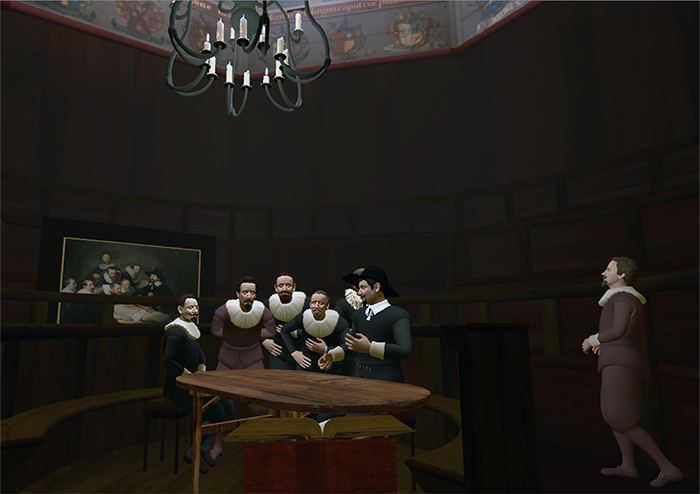ABOUT THE PROJECT
The objective of this research project is to further develop the concept of the interactive diorama based on the painting The 1632 Anatomy Lesson of Dr. Nicolaes Tulp by Rembrandt.
Invented by Louis Mandé Daguerre, the diorama genre was already in existence in 1825. Rather than a collection of static forms, dioramas aimed to be dynamic and performance-oriented presentations. Even in dioramas found in natural history museums taxidermists were careful to provide a sense of animacy and simultaneously convey realism and emotion.
VIRTUAL REALITY SIMULATION
The Interactive Diorama of the Anatomy Lesson of Dr. Nicolaes Tulp is a virtual reality simulation of the original artwork by Rembrandt realized by professor Lily Díaz-Kommonen with the Department of Media Systems of Representation research group at Aalto University. The seven doctors present at the original sitting have been re-created as 3D avatar placeholders displaying gestures, motion, and speech. The setting of the lesson that reputedly took place at the meeting room of the Amsterdam’s Barber’s Surgeon Guild at Waag Society has been rendered at the 1691 Anatomical Theatre (also at Waag), through the study of 18th century images and using photogrammetry techniques.
The work celebrates and deconstructs this important moment when the history of art and science converges in spectacle. It compares the representation-based pictorial space of the canvas with the dynamic, embodied, and relational space of virtual reality environments.
PROJECT’S WEBSITE: PRESS HERE

